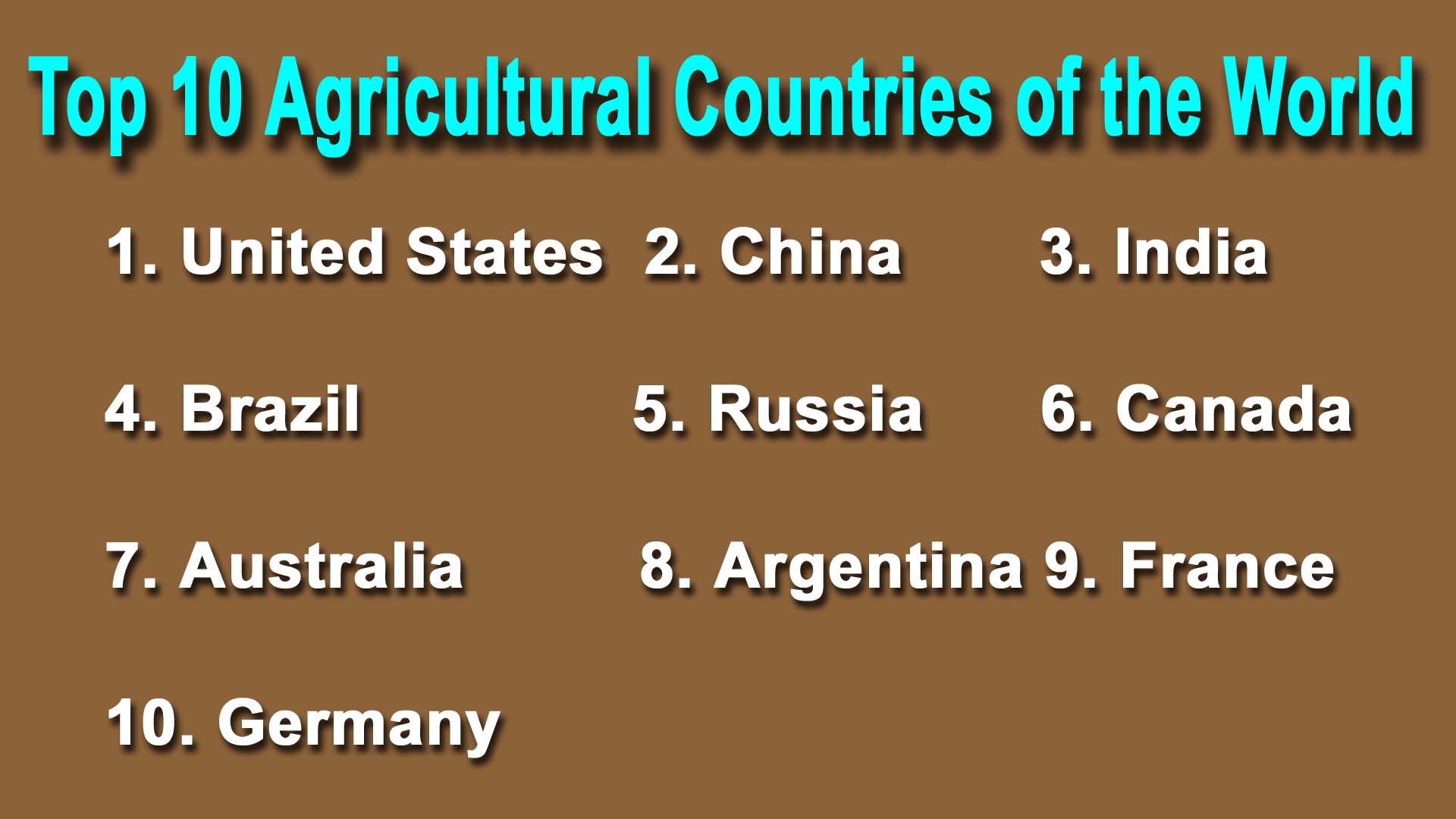

 Top 10 Agricultural Countries of the World
Top 10 Agricultural Countries of the World
Agriculture forms the backbone of civilization, providing sustenance, economic prosperity, and cultural identity to nations worldwide. As global populations burgeon and climates shift, the significance of agricultural productivity becomes increasingly paramount. Across the globe, certain countries stand out for their remarkable agricultural prowess, not only feeding their own populations but also contributing significantly to global food security. Let’s delve into the top 10 agricultural countries that play a pivotal role in shaping the world’s food production landscape.
1. United States:
The United States boasts one of the most diverse and technologically advanced agricultural sectors globally. Vast expanses of fertile land, coupled with innovative farming practices and machinery, enable the U.S. to produce a staggering array of crops ranging from corn and soybeans to wheat and cotton. Additionally, the U.S. leads in agricultural research and development, driving continuous improvements in yield and efficiency.
2. China:
With its massive population and varied climatic zones, China’s agricultural output is vast and diverse. The country ranks among the top producers of rice, wheat, and vegetables globally. China’s agricultural sector has undergone significant modernization efforts, with the adoption of advanced technologies and large-scale mechanization contributing to increased productivity.
3. India:
India, renowned for its rich agricultural heritage, is a global agricultural powerhouse. The country’s diverse climate supports the cultivation of a wide range of crops, including rice, wheat, sugarcane, and pulses. Agriculture remains a vital sector of India’s economy, employing millions of people and contributing significantly to GDP.
4. Brazil:
Blessed with extensive arable land and favorable climatic conditions, Brazil has emerged as a major player in global agriculture. The country is the world’s largest exporter of soybeans and beef, with substantial production of other commodities such as sugar, coffee, and corn. Brazil’s agricultural success is underpinned by large-scale commercial farming operations and robust agribusiness infrastructure.
5. Russia:
Russia’s vast landmass encompasses diverse ecosystems conducive to agricultural cultivation. Despite challenges posed by harsh winters and sparse population in remote regions, Russia is a leading producer of grains such as wheat, barley, and oats. The country’s agricultural sector continues to evolve, driven by investments in modernization and technological advancements.
6. Canada:
Canada’s agricultural sector benefits from fertile prairie lands in the west and vast expanses of arable land across the country. Wheat, canola, and pulses are among the key crops cultivated in Canada, with the country recognized for its high-quality agricultural products. Sustainable farming practices and stringent quality standards contribute to Canada’s reputation as a reliable supplier of agricultural commodities.
7. Australia:
Australia’s agricultural landscape is characterized by vast plains and a predominantly arid climate. Despite water scarcity challenges, the country is a major producer of wheat, barley, and beef. Innovations such as precision agriculture and drought-resistant crop varieties are helping Australian farmers adapt to climatic variability while maximizing productivity.
8. Argentina:
Argentina’s fertile Pampas region forms the heartland of its agricultural sector, supporting the cultivation of crops such as soybeans, corn, and wheat. The country is a leading exporter of soy products and beef, with agriculture playing a central role in its economy. Investments in infrastructure and technology continue to drive growth in Argentina’s agricultural productivity.
9. France:
France is renowned for its diverse agricultural landscape, ranging from vineyards and orchards to cereal fields and dairy farms. The country is a global leader in wine production and is also prominent in the cultivation of wheat, barley, and sugar beets. France’s agricultural sector is characterized by a strong tradition of family-owned farms and adherence to strict quality standards.
10. Germany:
Germany’s agricultural sector combines traditional farming practices with modern technology and sustainability initiatives. The country is a major producer of grains, including wheat, barley, and rye, as well as potatoes and sugar beets. German agriculture emphasizes environmental stewardship and organic farming methods, reflecting a commitment to sustainability and biodiversity.
These top 10 agricultural countries play a pivotal role in shaping the global food production landscape. Through technological innovation, sustainable practices, and sheer agricultural acumen, these nations not only feed their own populations but also contribute significantly to meeting the world’s growing food demands. As challenges such as climate change and population growth loom large, the continued success of these agricultural powerhouses will be essential in ensuring food security and sustainability for generations to come.